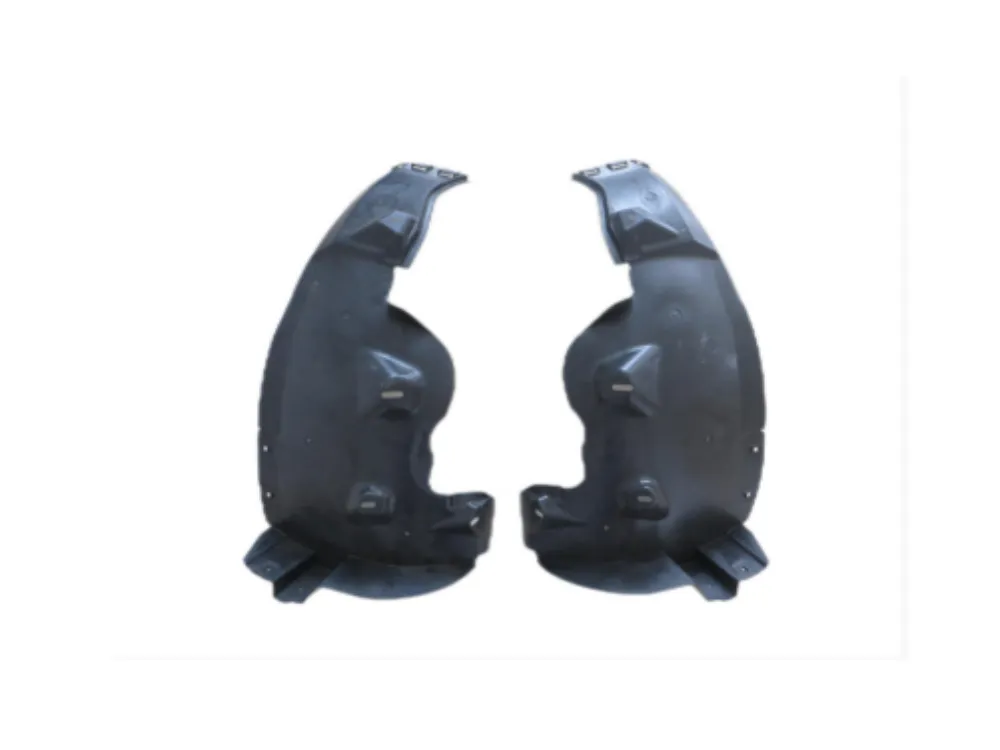Explorando a Variedade e Funções dos Pára-choques Automotivos
Para-lamas de carro desempenham um papel fundamental na proteção e estética do veículo. Esses componentes não apenas protegem as rodas e o chassi do carro contra detritos, lama e água, mas também contribuem para o design geral e a aerodinâmica do automóvel. Com tendências automotivas em evolução e uma grande diversidade de tipos de veículos, a variedade de pára-choques disponíveis hoje é ampla e diversificada. Compreender os diferentes tipos de pára-choques pode ajudar proprietários de carros, entusiastas e profissionais a tomarem decisões informadas em relação à manutenção, reparos ou customização.
Tipos de Pára-choques com Base no Material
Pára-choques de Aço e Alumínio
Tradicionalmente, para-lamas de carro são feitos de aço ou alumínio, oferecendo proteção e durabilidade robustas. Os pára-choques de aço são conhecidos por sua resistência e capacidade de suportar impactos, sendo ideais para veículos expostos a condições adversas ou uso fora de estrada. Já os pára-choques de alumínio oferecem a vantagem de serem leves, mantendo ainda boas qualidades protetoras. Essa redução de peso pode melhorar a eficiência do combustível e a dirigibilidade. Ambos os materiais são comumente utilizados na fabricação original (OEM) e em substituições no mercado secundário.
Pára-choques de Plástico e Compósito
Asa de plástico e compósito ganharam popularidade devido à sua flexibilidade e resistência à corrosão. Esses materiais são menos propensos a enferrujar, tornando-os adequados para áreas com condições climáticas adversas ou estradas com sal. As asas de plástico são mais leves e frequentemente menos caras que as metálicas, tornando-as uma opção economicamente viável para muitos proprietários de veículos. Compósitos, que combinam plástico com fibras reforçantes, oferecem maior resistência e durabilidade. Esse tipo de asa é frequentemente utilizado em veículos de desempenho e especiais por apresentar um bom equilíbrio entre peso e resiliência.
Estilos e Designs de Asa de Carro
Asas Completas
Os pára-lamas completos cobrem toda a abertura da roda e se estendem do pára-choques dianteiro até a porta ou do pára-choques traseiro até a área do porta-malas. Eles oferecem proteção abrangente contra detritos da estrada, sujeira e respingos de água. Os pára-lamas completos são padrão na maioria dos carros de passageiros e caminhões. Seu design frequentemente se integra suavemente às linhas do corpo do veículo para realçar o apelo visual, garantindo ao mesmo tempo funcionalidade. Esse tipo de pára-lama é essencial para manter a integridade do veículo, especialmente nas condições de condução diárias.
Para-lamas
As molduras para para-lamas são extensões que se fixam aos para-lamas existentes, aumentando a cobertura sobre as rodas. Elas são populares entre entusiastas de veículos off-road e customizados que instalam pneus maiores ou desejam obter um visual mais robusto. As molduras protegem o veículo contra lama, pedras e outros detritos levantados por pneus oversized. Elas também ajudam a atender requisitos legais relacionados à cobertura dos pneus. Disponíveis em diversos tamanhos e estilos, as molduras permitem personalização aliada a benefícios práticos.
Para-lamas Especiais para Carros
Para-lamas Leves para Corrida
Veículos de corrida frequentemente utilizam pára-choques especiais leves, projetados para reduzir o peso total do veículo e melhorar o desempenho. Esses pára-choques geralmente são fabricados em fibra de carbono ou outros compósitos avançados. Os materiais oferecem uma relação resistência/peso superior em comparação com metais tradicionais. Pára-choques leves de competição contribuem para uma aceleração mais rápida, melhor dirigibilidade e eficiência no consumo de combustível. Seu design aerodinâmico também reduz a resistência ao ar, o que é crucial em ambientes de corridas competitivas.
Pára-choques Personalizados e de Aftermarket
Pára-lamas personalizados e de reposição atendem proprietários de veículos que buscam aparência única ou melhorias funcionais específicas. Esses pára-lamas podem variar amplamente em design, desde estilos agressivos e de carroceria larga até modificações discretas que se integram perfeitamente ao corpo original do carro. As opções de reposição também incluem pára-lamas reforçados para uso pesado ou materiais especializados para maior durabilidade. A escolha de pára-lamas personalizados permite que os proprietários expressem seu estilo pessoal e atendam a necessidades individuais de condução.
Fatores que Influenciam a Escolha dos Pára-lamas
Tipo de veículo e uso
O tipo de veículo e seu uso principal influenciam significativamente na escolha dos pára-lamas. Carros de passeio, caminhões, SUVs e veículos comerciais possuem diferentes exigências. Por exemplo, caminhões e veículos off-road podem exigir pára-lamas mais robustos ou flares adicionais para lidar com terrenos difíceis e pneus maiores. Carros de passeio, especialmente modelos de luxo, podem priorizar pára-lamas elegantes e aerodinâmicos que complementem seu design.
Condições Ambientais e Durabilidade
Fatores ambientais, como clima e condições das estradas, afetam a seleção de para-lamas para carros. Veículos em regiões com chuvas fortes, neve ou estradas salinizadas se beneficiam de materiais resistentes à corrosão, como plástico ou compósitos. Em contraste, áreas com exposição mínima a elementos agressivos podem preferir para-lamas tradicionais de aço ou alumínio por sua durabilidade. Considerar o ambiente local garante que o para-lama escolhido resistirá aos desafios cotidianos e manterá sua aparência ao longo do tempo.

Considerações sobre Instalação e Manutenção
Facilidade de instalação
A facilidade de instalação dos para-lamas varia conforme o tipo e o modelo do veículo. Para-lamas do estilo OEM geralmente se encaixam diretamente e exigem ajustes mínimos. No entanto, para-lamas customizados ou de mercado secundário podem exigir ajustes precisos e, às vezes, instalação profissional para garantir um alinhamento adequado e fixação segura. A facilidade de instalação pode influenciar o custo total e o tempo necessário para reparos ou atualizações.
Manutenção e reparação
A manutenção dos pára-choques do carro envolve limpeza regular e inspeções ocasionais para detectar danos, como amassados, arranhões ou ferrugem. Pára-choques de aço podem exigir mais atenção para prevenir corrosão, especialmente em climas adversos. Pára-choques de plástico e materiais compostos geralmente requerem menos manutenção, mas podem ser propensos a rachaduras ou desbotamento. Reparos imediatos e revestimentos protetores podem prolongar a vida útil de qualquer pára-choque, preservando sua função e aparência.
Tendências Futuras no Desenvolvimento de Pára-choques Automotivos
Materiais e tecnologias avançados
O futuro dos pára-choques automotivos está voltado para materiais avançados que ofereçam maior resistência, redução de peso e maior durabilidade. Inovações, como compósitos com grafeno e materiais inteligentes capazes de reparar pequenos danos automaticamente, estão em desenvolvimento. Esses avanços visam aumentar a segurança, a eficiência e a longevidade dos pára-choques, ao mesmo tempo que reduzem o impacto ambiental por meio de processos de fabricação sustentáveis.
Integração com Sistemas de Segurança Veicular
Os designs modernos de carros estão integrando cada vez mais os pára-choques com recursos de segurança do veículo, como sensores e câmeras. Esses pára-choques não são apenas coberturas protetoras, mas também alojam tecnologia que suporta assistência de estacionamento, evitando colisões e detectando pedestres. A fusão entre estética, proteção e tecnologia representa o próximo passo na evolução dos pára-choques automotivos.
Perguntas Frequentes
Quais são os principais materiais utilizados para fabricar pára-choques de carros?
Os pára-choques automotivos são normalmente feitos de aço, alumínio, plástico ou materiais compostos. Cada um oferece vantagens específicas, como resistência, propriedades leves ou resistência à corrosão.
Como os estendores de pára-choque diferem dos pára-choques completos?
Estendores de pára-choque são acessórios que aumentam a cobertura além do pára-choque original, frequentemente usados para acomodar pneus maiores ou por razões estéticas. Os pára-choques completos cobrem toda a passagem da roda e são padrão na maioria dos veículos.
Pára-choques personalizados podem melhorar o desempenho do veículo?
Sim, para-lamas personalizados feitos de materiais leves podem reduzir o peso do veículo e melhorar a aerodinâmica, aumentando o desempenho, especialmente em corridas ou em terrenos off-road.
Quão importante é a escolha do material para para-lamas em diferentes climas?
A escolha do material é crucial, pois afeta a durabilidade e a resistência à corrosão. Para-lamas de plástico ou composto têm melhor desempenho em ambientes úmidos ou com sal, enquanto para-lamas metálicos oferecem proteção robusta em condições menos severas.
Sumário
- Explorando a Variedade e Funções dos Pára-choques Automotivos
- Tipos de Pára-choques com Base no Material
- Estilos e Designs de Asa de Carro
- Para-lamas Especiais para Carros
- Fatores que Influenciam a Escolha dos Pára-lamas
- Considerações sobre Instalação e Manutenção
- Tendências Futuras no Desenvolvimento de Pára-choques Automotivos
- Perguntas Frequentes


